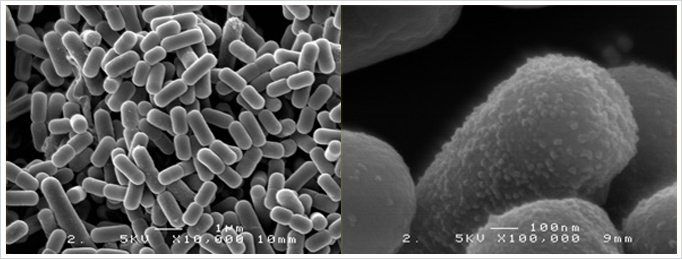

The history of lactobacillus
- 1.Dutchman Antoni van Leeuwenhoek (1632-1723) was the first to observe this bacillus.
- 2.French s cientist Louis Pasteur (1822-1895) investigated lactic fermentation in earnest. He is called its “microbiological father”.
- 3.British surgeon Joseph Jackson Lister (1857-1927) was the first to separate a pure sample of it.
- 4.German Robert Koch (1843-1910) devised "the flat board culture method” and discovered one after the other the disease-causing germs of epidemics including cholera, and is known as lactobacillus’s modern “bacteriological father”.
- 5.Tissier at the Pasteur Laboratory discovered bifidus bacillus from the feces of a breast-feeding child in 1899.
- 6.Ilya Ilyich Mechnikov, (1845-1916) proposed at the beginning of the 20th century that the secret of longevity of local people※, was to be found in yogurt that contained abundant amounts of Bacillus.
Spanish Influenza: a new powerful form of influenza that ran from 1918 to 1919. 40,000,000 people died worldwide. In Japan 25,000,000 people were infected and 380,000 people died. However, in the district where lactobacillus (fermented milk) was drunk, there were no deaths.
The different kinds of the lactobacillus
Lactobacillus is the general term for "a bacteria that produces a large amount of lactic acid that breaks down milk sugar and glucose".
Our daily food makes use of lactobacillus such as yogurt, cheese, lactobacillus drink, miso, soy sauce, refined sake, wine, bread, kimchi, Makk lli, Szechwan pickles, mianma bamboo shoots etc.
Animal origin lactobacillus: it grows readily in animal origin milk and meat.
Vegetable lactobacillus: it grows easily in pickles, grains or fruit juice of plant origin.
Lactobacillus derived from the intestinal tract system: it inhabits the intestines of humans and animals.
In the human intestines there are about 100,000,000,000,000 units of 100-500 different kinds, weighing about 1kg - 1.5kg.
Bacteria inside the human intestines
* The bowels in a fetus are totally germfree, but on birth the baby is exposed to bacteria of many kinds.
* As for a baby one or two days after birth, colon bacillus, enterococcus and Clostridium welchii develop in the bowels, in the third and fourth days of life bacteria (good bacteria) appear in the colon, and those harmful bacteria (bad bacteria) begin to decrease, and by the fifth day the good bacteria in the colon start to overwhelm the other bacteria.
By the way, there are various bacterial groups in the colon called enterobacterial flora. In addition, the bacteria can be classified from the work and influence on human body into three groups namely good bacteria such as lactic acid bacteria, bad bacteria such as colon bacillus and Welshi bacteria and a middle group that does not belong to either of the other two groups.
In addition, the bacteria inhabiting human intestines take their nutrition from digested meals and are mostly anaerobic, meaning they do not need oxygen to multiply.
Depending on the part of the digestive organs, age, eating habits and general health there is a difference, but there is a symbiotic relationship with humans. It is said that intestinal bacteria accounts for about 50% of feces. There are many classifications of lactobacillus: four types are found in human intestines:
1. The Enterococcus genus (cocci)
2. The Streptococcus genus
3. The Lactobacillus genus
4. Bifidobacterium (A bifidus bacillus)
Concerning JA3M(P-IF) lactobacillus
" Lactobacillus kefiri (P-IF JA3M bacteria )" is made up of basically two kinds of lactobacillus (③above), Lactobacillus kefiri P-IF (patent number: FERM BP -10896) and Lactobacillus kefiri P-B1 (patent number: FERM P-21554), as well as three kinds of yeast, Kazachstania turice nsis P-Y3 (patent number: FERM P-21556), Kazachstania unispora P-Y4 (patent number: FERM P-21557) and Kluyveromyces marxianus P-Y5 (patent number: FERM P-21558).
JA3M bacteria’s ability
This Lactobacillus is able to reduce its pH quickly over 48hrs to pH3.6 (the same as stomach acid) while it multiplies, and so it is able to pass through stomach acid and enter the colon undamaged, also it able to destroy other bacteria (bad bacteria) with organic acid that it produces, thus keeping the intestinal flora in balance.
The reason why people are healthy is because good bacteria suppress the bad bacteria so that flora in the intestines is kept in constant balance, but a negative environment, poor eating habits or stress adversely affect the body and bad bacteria start to increase, intestinal putrefaction starts, leading to an increase in harmful substances such as ammonia, phenol and indole which are absorbed by the intestinal tract and over a long time burden the liver, heart, kidneys and promote aging, leading to various illnesses, including cancer.
JA3M bacteria obstruct growth of bad bacteria through their strong antibacterial activity. In addition, it can be said that there is an effect on the production of JA3M bacteria, and it is thought that it can be absorbed by the intestinal tract, due to the surface structure (sugar chain structure) of JA3M bacteria. As a result, there are expectations of immunostimulation of the intestinal tract as well as elimination of toxic substances.
Furthermore, the result of experiments showed that when compared with commercial yogurt a remarkable effect was confirmed, that after continual consumption for two weeks JA3M bacteria reached and maintained maximum activity level. Instead of being responsible for thinking about eating habits and a stressful environment, instead by using JA3M bacteria one will be able to maintain the best health. In future, various experiments with viruses &c will show JA3M bacteria can contribute greatly to the health of mankind.























